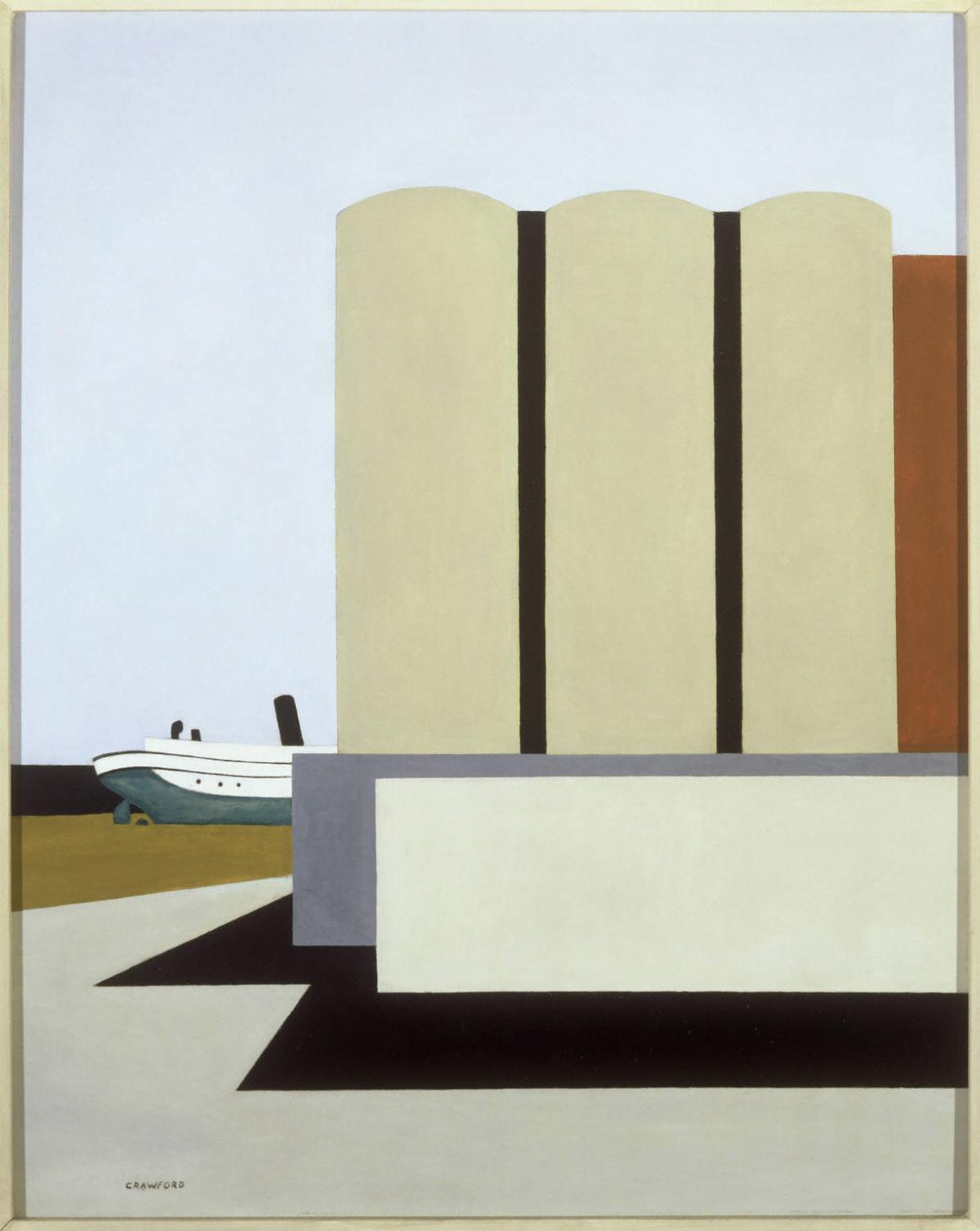Boat and Grain Elevators No. 2
Ralston Crawford ( 1942 )

During the early thirties, at a time when many American artists were turning away from the wave of modernism that had swept the country since the early teens, Ralston Crawford appropriated the precisionist style to create smoothly painted, planar paintings of subjects specifically associated with America, including skyscrapers, industrial structures, and machinery. Boat and Grain Elevators, No. 2, which idealizes the industrial landscape, is one of Crawford’s last precisionist explorations.
Crawford’s interest in docks, shipyards, bridges, and grain elevators stems from his childhood, which was spent near Lakes Erie and Ontario. He later remarked on “how deeply the vital and most vividly recalled experience is identified with these lakes, these boats.” His exposure to the precisionist art of Charles Demuth and, especially Charles Sheeler, further fueled his interest in industrial subjects.
Crawford was often drawn to rural locales that were being overtaken by American industrialism. Although the exact site ofBoat and Grain Elevators, No. 2 has not been identified, it was probably located near the port of Buffalo, because it depicts an ocean-going merchant steamer rather than a flat river boat. In the painting he eliminates details, focusing instead on the “blank center” of the elevators, the central image in the composition. To increase the two-dimensional effect even further and render the subject even more universal, Crawford simplified the various elements into broad, flat planes of color.
Although Duncan Phillips appreciated precisionism as a movement uniquely American, he was not emotionally drawn to it. He failed to agree with the precisionists’ view of industrial subjects as symbols of order and reason and as part of America’s cultural heritage. He believed, however, that Crawford had great potential as an artist, and purchased Boat and Grain Elevators, No. 2 for his “encouragement collection” of work by developing artists; however by the late fifties he considered it part of the permanent collection.